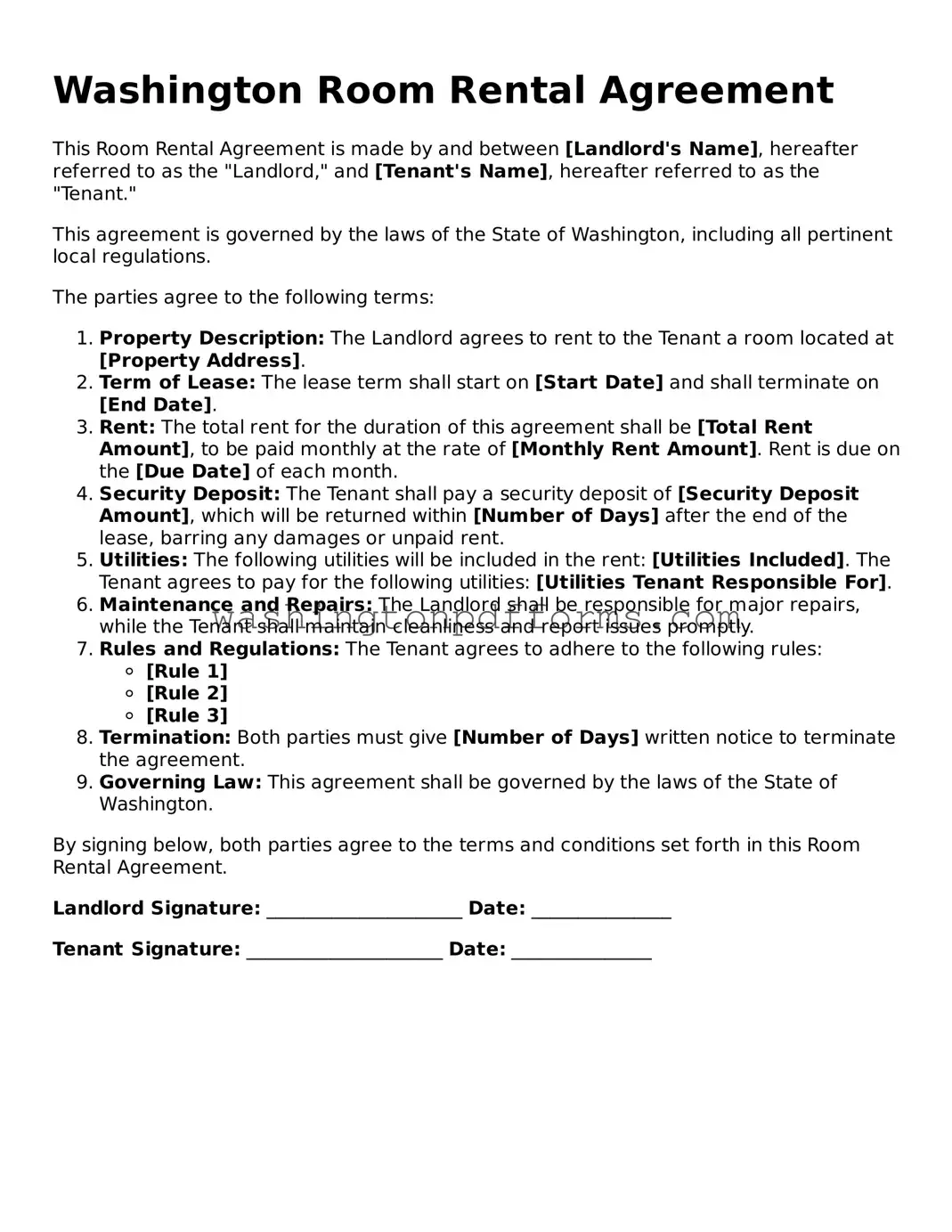Filling out the Washington Room Rental Agreement form can be straightforward, but many people make common mistakes that can lead to confusion or legal issues. One frequent error is not providing complete information. Renters often forget to include their full names, contact details, or the specific address of the rental property. Omitting these details can create complications later on.
Another mistake is failing to read the terms carefully. Some individuals rush through the agreement without understanding their responsibilities. This can lead to misunderstandings about rent due dates, security deposits, and maintenance obligations. Always take the time to read each section thoroughly.
People also sometimes overlook the importance of dates. Entering incorrect start and end dates for the rental period can cause disputes. It’s essential to double-check these dates to ensure they align with both parties’ expectations.
Not documenting any additional agreements is another common oversight. If there are special conditions or agreements made verbally, they should be included in the form. Relying on memory can lead to disagreements later. Written agreements provide clarity and protection for both parties.
Inaccurate payment details can create issues as well. Renters may mistakenly enter the wrong amount for rent or miscalculate the security deposit. Double-checking these figures is crucial to avoid any payment disputes.
People often forget to sign the agreement. A form without signatures is not legally binding. Both the landlord and tenant must sign to confirm their acceptance of the terms. Ensure that all necessary signatures are included.
Finally, neglecting to keep a copy of the signed agreement can lead to problems down the line. After filling out the form, both parties should retain a copy for their records. This helps in resolving any future disputes that may arise.
